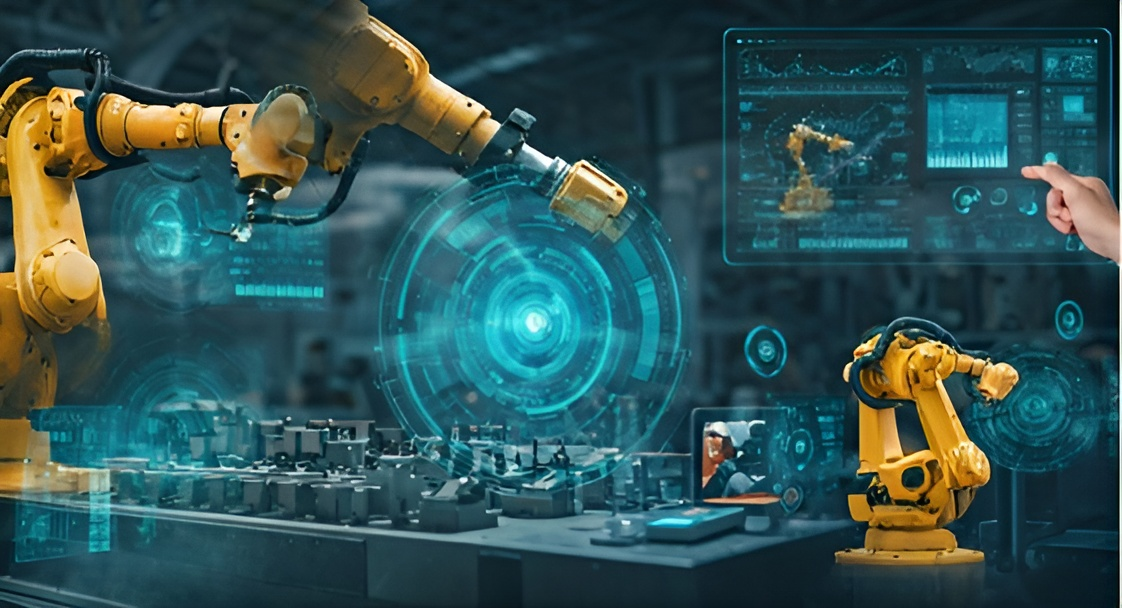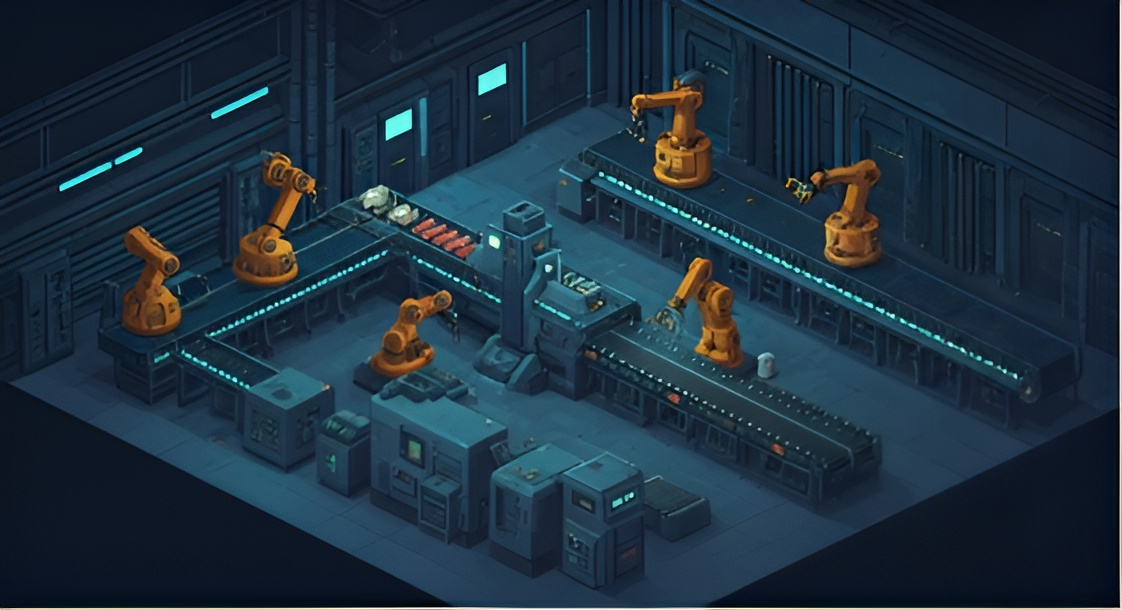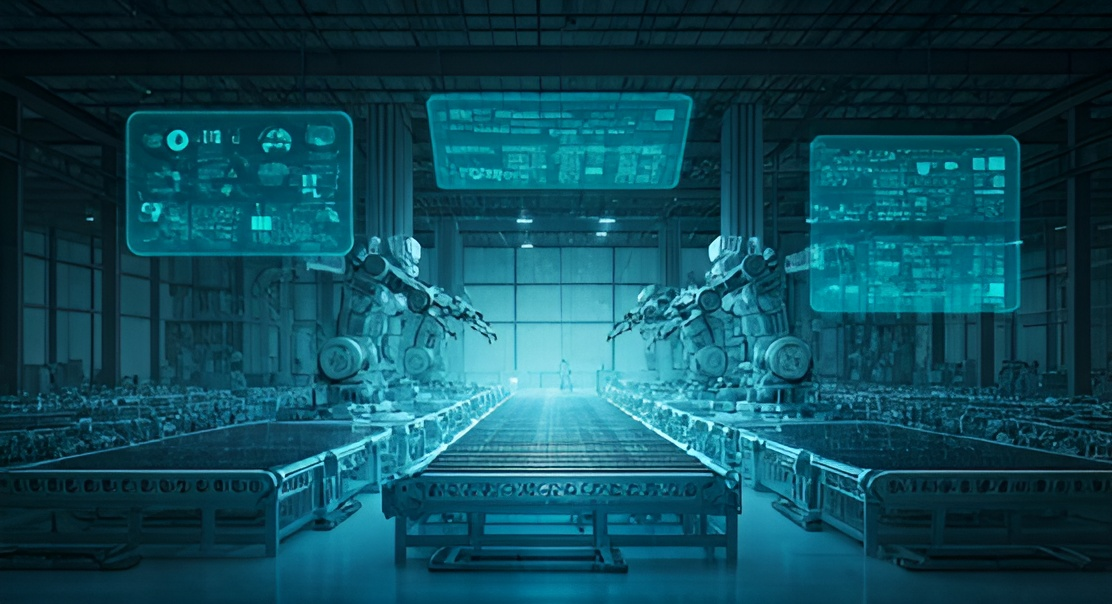Exploring the Benefits of Automatic Manufacturing Today
Exploring the Benefits of Automatic Manufacturing Today
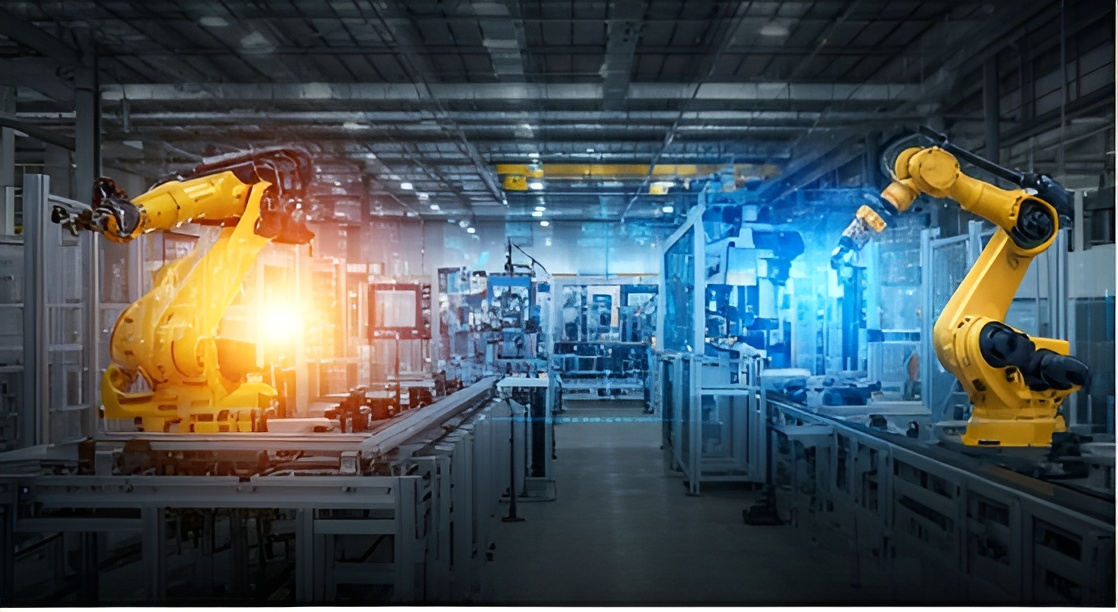
Key Highlights
- Automatic manufacturing systems harness advanced industrial automation tools, such as robotic arms, control systems, and machine tools, to elevate the manufacturing process.
- Different types of automation, including fixed, programmable, and flexible automation, address diverse production needs and improve adaptability.
- System implementation increases production efficiency while reducing labor costs and minimizing the risk of human error.
- Automatic systems ensure consistent product quality by integrating sensors for real-time quality checks.
- Automation technology, like the industrial internet of things (IIoT), supports supply chain management and contributes to continuous improvement.
Exploring the Future of Automatic Manufacturing Today
The Evolution of Automatic Manufacturing in the United States
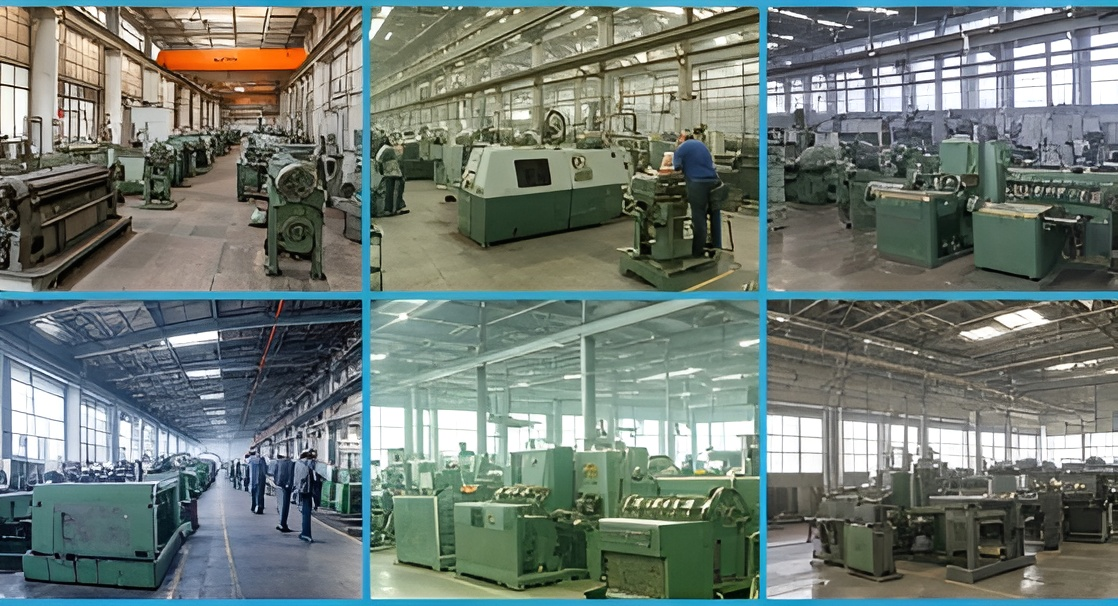
The story of automatic manufacturing in the United States shows big changes in the manufacturing process. At first, people used only manual methods. Later, industrial automation started to take over as new ideas, like numerical control, were made. Later on, automated manufacturing systems helped push this even farther. Today, the rise of the fourth industrial revolution shows how fast things keep changing.
Now, in many manufacturing plants, robots and the internet of things are being used together. This brings a new level of accuracy and helps things run more smoothly. These changes happened because the needs of the industry have changed over time.
From Manual Labor to Automation: Key Milestones
The move from manual processes to automation was a big turning point in how things were made. Back in the early days, people in factories made products by hand. This took a lot of time and often led to human error. As time went on, automated manufacturing systems came in. They helped reduce the problems that were common with doing things by hand.
One important step happened in the middle part of the 1900s. This was when numerical control, or NC, was used. Now, machines could get instructions through programs for things like cutting and shaping. Because of this, it became much easier to be exact with work.
A good example is General Motors. In the 1960s, they led the way by using robots on the production line. With automotive assembly robots, the need for human intervention on the factory floor changed. Because of this, factories could boost production speeds and still keep up the quality. All these steps set up the world for the fully automated systems we see now.
Modern Technologies Driving Change
Advances in automation technology are changing the way modern factories work. Tools like artificial intelligence and industrial robots now help machines learn from data. For instance, these tools can see when one machine needs to be fixed and improve how products are made.
Digital transformation helps systems work together. For example, when you use internet of things (IoT) devices, you can see what is happening in real time. These devices help manage energy and make it easier to control the factory process. Because of this, factories can keep a close eye on every part of what they do.
Factories use industrial robots, such as robotic arms, to make their work more exact. These robots lower mistakes and make the assembly process easier. By adding these new ideas, manufacturers get better at what they do each day. This is helping set a higher standard for everyone.
Core Components of Automatic Manufacturing Systems
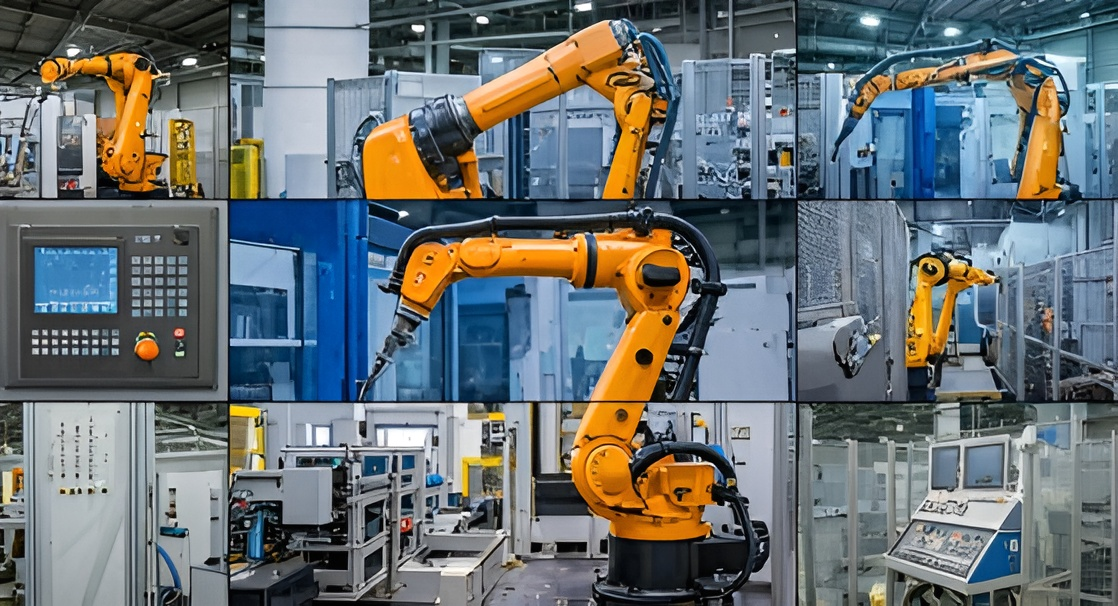
Every good manufacturing system needs key parts to run well. Control systems are important parts in this. Things like programmable logic controllers (PLCs) help to control and change what happens in real time.
Along with control systems, there are machine tools and sensors at work. Machine tools help with tasks that cut or shape things, while sensors keep an eye on quality by taking data as things are made. When you use automated manufacturing systems with machine tools, sensors, and PLCs, you can get things made right and keep everything running without stopping.
Robotics and Smart Machinery
Today, robotic arms and smart machinery play a big part on the production line. They have changed the way people get assembly tasks done. Industrial robots do the same job over and over, like welding, putting parts together, or packing items. They do this with great accuracy.
Smart machinery has special technology that helps the different parts of the assembly process work well together. For example, in car factories, robotic solutions can make work move faster. They make sure the job is done well without losing the good quality.
Most important, robotics help lower the chance of human error. For many companies, like Tesla, using advanced industrial robots shows how these machines make work in manufacturing plants safer and more efficient. Now, it would be hard to think of a good factory without them.
Industrial Internet of Things (IIoT) Integration
Bringing the Industrial Internet of Things (IIoT) into automatic manufacturing helps make production faster and better. It also helps improve real-time data and lets all machines, sensors, and control systems talk to each other with no trouble. This helps companies watch for problems early and fix them before machines break down. Because of IIoT, manufacturing plants have a good way to use automation technology, which helps with supply chain management and makes the assembly process smoother. When there is less human intervention, machine use gets better, labor costs go down, and the product quality and consistency become much better every time.
Types of Automation Used in Manufacturing
Automation in the manufacturing process comes in different forms to fit what you need. The three main types of automation are fixed automation, programmable automation, and flexible automation. Each one works best for a different job in the process.
Fixed automation is best to use when you have a large number of items to make. Programmable automation is great to use for batch production. Flexible automation is able to change to fit different product needs, which helps increase production efficiency. Picking the right type of automation is important to help you stay ahead and use your resources in the best way.
Fixed vs. Programmable Automation
| Aspect | Fixed Automation | Programmable Automation |
|---|---|---|
| Definition | Built for repetitive jobs with high numbers of items. | Suited for batch production, needs new programming each time. |
| Production Speed | Gives faster production and steady results. | Slower because you have to switch between tasks. |
| Main Application | Used most in car assembly lines. | Often used when making things in set cycles each season. |
| Flexibility | Offers very little. | Can change to make different items. |
Hard automation puts the focus on both speed and making things all the same, like when shaping car parts. But programmable automation helps companies that need to switch things up by allowing changes between each batch production. This kind of setup fits needs where you have to adapt often and handle changes without much trouble.
Flexible and Computer-Integrated Manufacturing
Flexible automation gives factories more ways to change what they make. This means they can adjust fast when the market shifts. It helps factories switch between products without much downtime.
Along with these setups, computer-integrated manufacturing (CIM) links all the manufacturing plants through shared data. CIM keeps things running smoothly so companies can get better all the time.
If your business wants to stay up to date, it is important to use both of these modern tools. They help keep work careful and allow changes that match what people want.
Continue reading for the economic effects of automatic manufacturing and the hurdles to its adoption
Key Benefits of Automatic Manufacturing
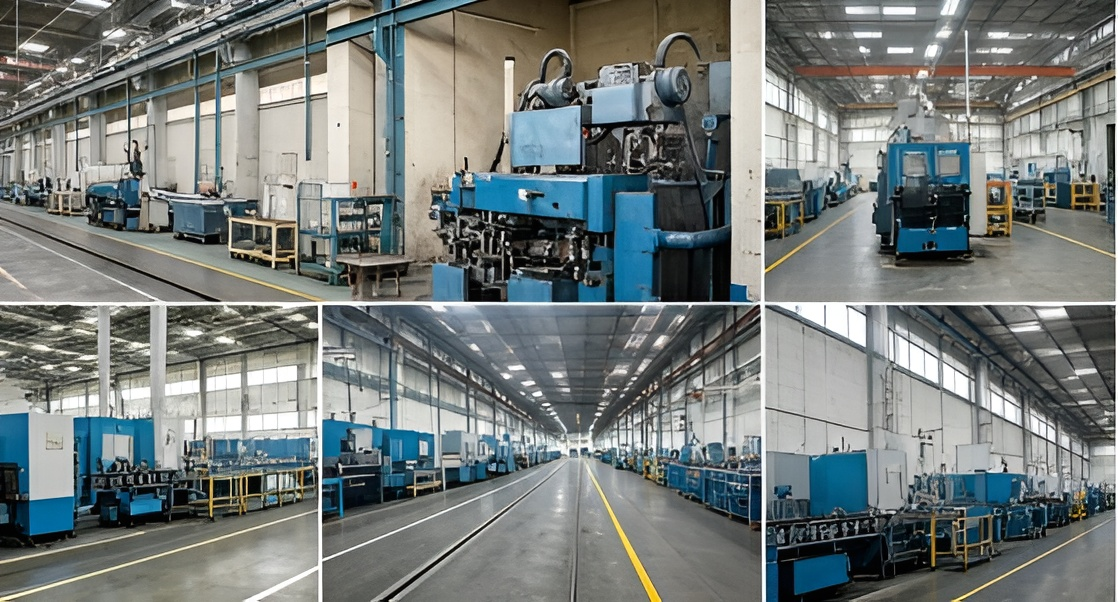
Automatic manufacturing helps to boost the output in production. This way of working cuts down the need for people to step in. It lowers the chance for mistakes and helps keep product quality the same each time.
When you use control systems and robotics, production speed can go up. This means that batch production goes faster, and manufacturing plants can make more items. The use of automation technology makes the assembly process smoother.
These changes encourage continuous improvement in the work done. They help make operations better and support economic growth in many areas. In the end, this leads to a strong, steady way for plants to keep growing and doing well.
Enhanced Production Efficiency
Automating the manufacturing process can make production much more efficient. When you add advanced control systems like programmable logic controllers and robotic arms to the assembly process, it helps things move faster with less trouble. Companies often see higher production speed and lower energy consumption, which is great for the whole manufacturing system. With less human intervention on the production line, the risk of human error goes down and things stay smooth. Also, when operations get more flexible, using the advantage of data analytics helps companies find ways for continuous improvement in various manufacturing processes.
Improved Product Quality and Consistency
Automated manufacturing systems help make sure that product quality stays high and consistent. They do this by using control systems and robots that are very exact. Because there is less human intervention, there is less chance for human error during the assembly process. With artificial intelligence and data analytics, you can get real-time updates and make changes right away on the production line. This feedback keeps every item made at a high standard of quality. As a result, you get higher customer satisfaction and reduce waste in various manufacturing processes.
Economic Impact on U.S. Manufacturing Businesses
Adding automatic manufacturing has changed how the economy works for U.S. businesses in this field. Many companies now use automation technology to make production more efficient. This lets them save money by lowering labor costs.
Automation technology also helps manufacturing plants do more and work better. These changes help make the supply chain stronger. Good supply chain management is important for growing the economy.
As companies bring in modern manufacturing trends, jobs in the field also start to change. Because of this, workers need new skills to keep up with the way the industry is growing and using automation.
Cost Savings and Return on Investment
Using an automated manufacturing system can help you save a lot of money. It does this by cutting labor costs and by lowering the chance of human error in the process. When you move to an automated manufacturing system, resources are used better. This way of working brings down what you spend to keep your operation running.
As processes get smoother and faster, the return on investment (ROI) gets better. This also makes product quality go up. If you use automation technology, you get a good advantage over other companies. It helps you grow in the market and makes your business more successful with better profits. Using this in various manufacturing processes helps drive economic growth and keeps your operations running in a good way.
Job Transformation and Workforce Upskilling
Automation is changing the way jobs work in manufacturing. It is now important for workers to have skills in new and advanced technology. There are fewer manual processes, so people need to upskill. Employees must learn to use tools like programmable logic controllers and industrial robots. They need to be better at using computers and handling technical tasks. This change helps people to always get better at what they do. It also lets workers take part in how the production process grows and changes. With automation technologies, companies will have a workforce that is ready for anything and can succeed in the fast-changing manufacturing world.
Addressing Challenges in Automation Adoption
Implementing automatic manufacturing comes with many challenges. For many manufacturing plants, the high initial investment needed for new automation technology can be a big barrier. This can be hard, especially for smaller businesses. But with smart planning, these costs can be managed. This lets businesses use automation technology in the right way.
Another problem is fitting new systems with old processes. For this, the old way and the new way must work well together. It helps if people are open to change and always look for ways to get better. If your team keeps trying to get better, it makes the whole process work more smoothly and helps automation become part of your business.
Overcoming Initial Investment Barriers
Many manufacturers stop and think before getting into automatic manufacturing because of the big investment at the start. The main worry is about paying upfront for automation technology like robotic arms and programmable logic controllers. It can look like a big hurdle. But when you look deeper, you can see how this can help. Cutting down labor costs, boosting production efficiency, and getting better product quality can save a lot of money and time later. If you also use the advantage of data analytics to check the possible return on investment, it can show why spending this money makes good sense. This helps people see the value of digital transformation in how they do their manufacturing work.
Managing Integration with Existing Processes
Bringing the Industrial Internet of Things (IIoT) into a manufacturing plant takes planning and the right steps. It helps to focus on modular automation and making sure different systems can work together. This way, control systems, robotic arms, and other new tools can add to what people already do without causing problems. When companies use data and process automation, they can find what slows them down and lower the risk of human error. Taking action early helps make the assembly process smoother. It also fits with the fourth industrial revolution and pushes new ideas and better work through the whole plant.
Conclusion
The change to automatic systems in the manufacturing process is a big step for many companies. It helps make things work better and also improves product quality. When businesses start to use industrial automation, they can work with new tools like artificial intelligence and robots. These tools help them run their production lines better. This change means there is less human error, and everything fits well with digital transformation. It is a smart move for the automotive industry and many other areas.

